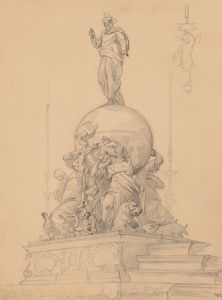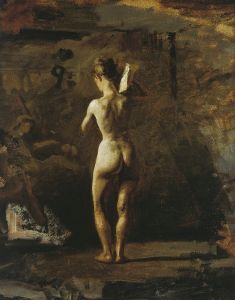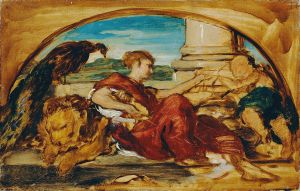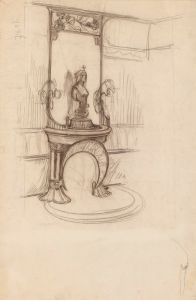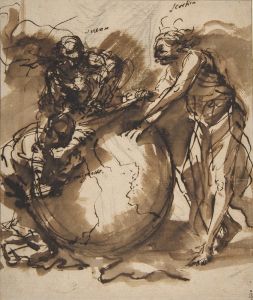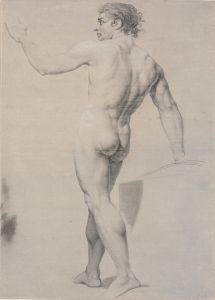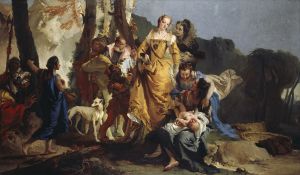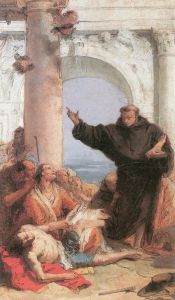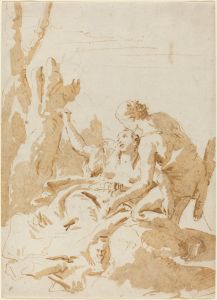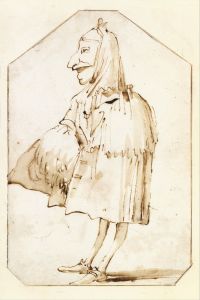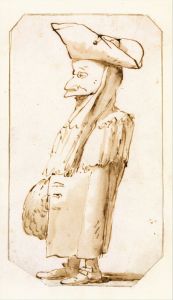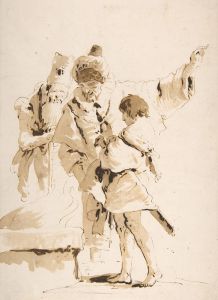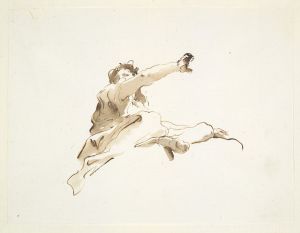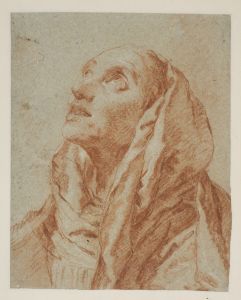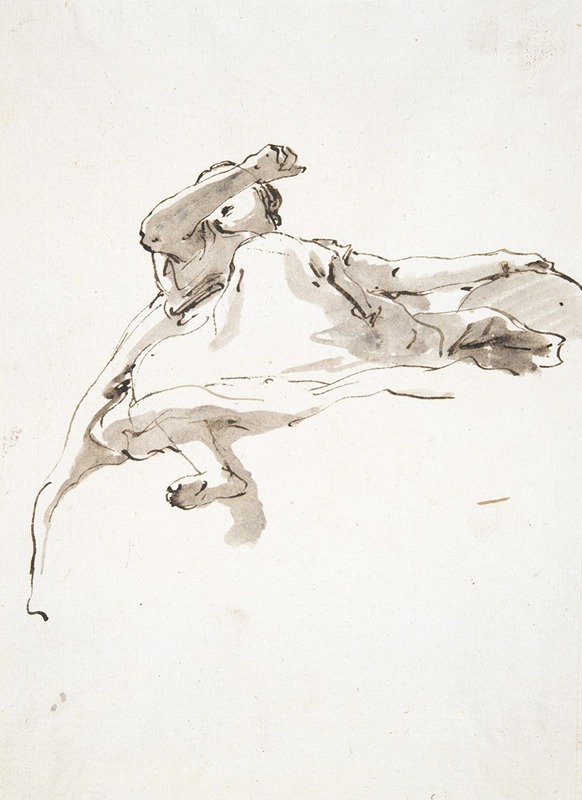
Reclining female figure, left hand resting on globe, right arm raised in front of face, seen from below
A hand-painted replica of Giovanni Battista Tiepolo’s masterpiece Reclining female figure, left hand resting on globe, right arm raised in front of face, seen from below, meticulously crafted by professional artists to capture the true essence of the original. Each piece is created with museum-quality canvas and rare mineral pigments, carefully painted by experienced artists with delicate brushstrokes and rich, layered colors to perfectly recreate the texture of the original artwork. Unlike machine-printed reproductions, this hand-painted version brings the painting to life, infused with the artist’s emotions and skill in every stroke. Whether for personal collection or home decoration, it instantly elevates the artistic atmosphere of any space.
Giovanni Battista Tiepolo (1696–1770) was an Italian painter and printmaker, widely regarded as one of the greatest artists of the 18th century. Known for his masterful use of light, color, and dynamic compositions, Tiepolo specialized in large-scale frescoes and religious and mythological scenes. His works are celebrated for their theatricality and grandeur, often featuring dramatic perspectives and a sense of movement.
The artwork titled Reclining Female Figure, Left Hand Resting on Globe, Right Arm Raised in Front of Face, Seen from Below is a drawing attributed to Tiepolo. This piece exemplifies his skill in creating dynamic and foreshortened figures, a hallmark of his style. The drawing depicts a reclining female figure, her left hand resting on a globe, symbolizing themes such as the cosmos, knowledge, or power. Her right arm is raised in front of her face, adding a sense of motion and drama to the composition. The perspective, described as "seen from below," suggests that the figure was intended to be viewed as part of a ceiling or fresco design, a common feature in Tiepolo's work.
Tiepolo often created preparatory drawings and sketches for his larger fresco projects, and this work may have been part of such a process. His ability to render figures with anatomical precision and fluidity is evident in this drawing. The use of foreshortening—a technique that creates the illusion of depth by depicting objects or figures at an angle—demonstrates Tiepolo's mastery of perspective and his understanding of how to create a sense of spatial realism.
While the exact purpose or commission for this drawing is not documented, it aligns with Tiepolo's broader body of work, which frequently included allegorical and mythological themes. The globe in the composition may hint at an allegorical meaning, possibly representing the figure as a personification of a concept such as Geography, Astronomy, or Fortune. However, without further historical documentation, the specific interpretation remains uncertain.
Tiepolo's drawings, including this one, are highly valued for their insight into his creative process. They reveal his ability to experiment with composition and refine his ideas before executing them on a larger scale. Today, his works, both finished frescoes and preparatory drawings, are studied and admired for their technical brilliance and artistic innovation.
This particular drawing is an example of Tiepolo's contribution to the Rococo style, characterized by its elegance, lightness, and decorative qualities. It reflects the artistic trends of the 18th century while showcasing Tiepolo's unique ability to combine technical skill with imaginative vision.





